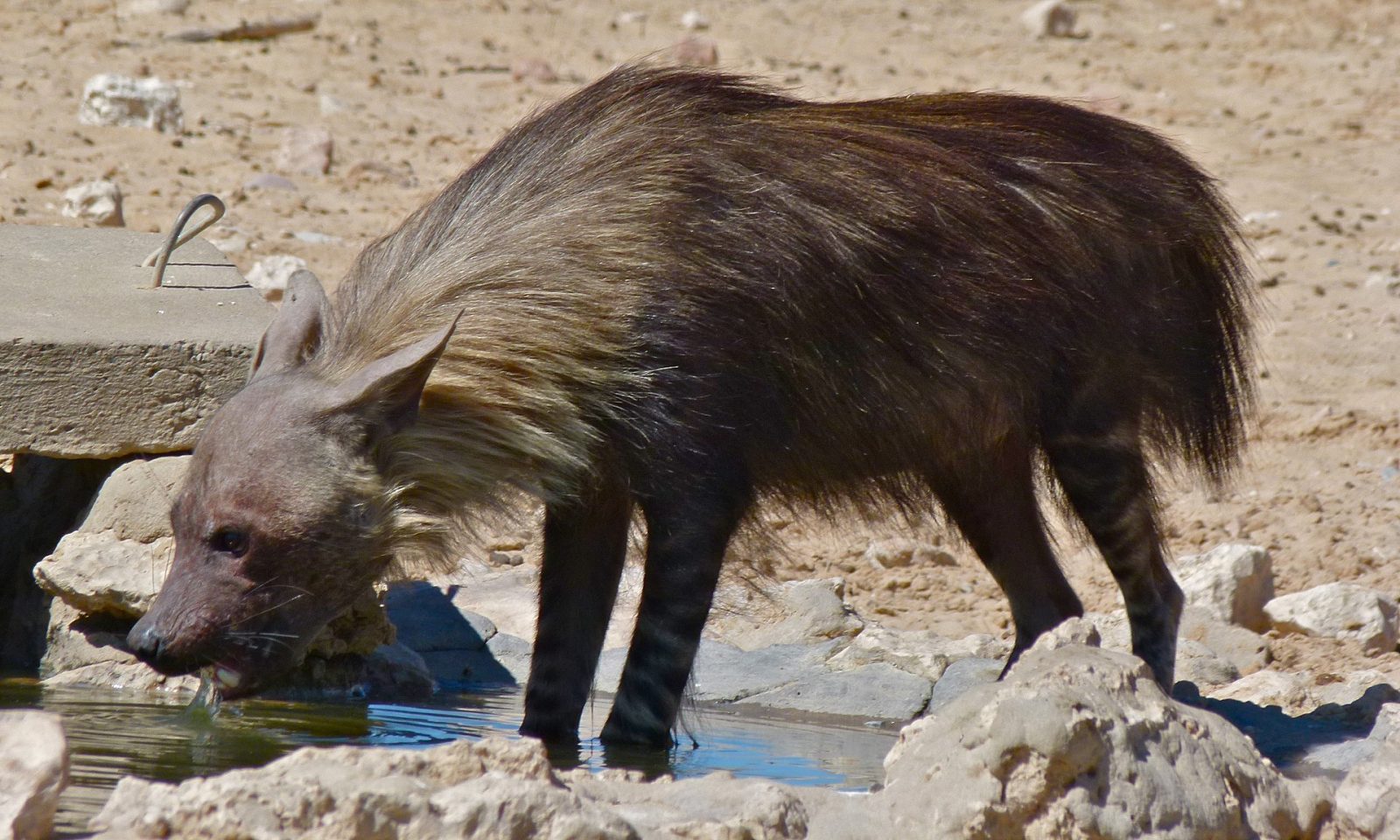The Kruger national park is one of the best places to watch wild animals. Indeed on this site I have around 10 destinations spread throughout the Kruger and greater Limpopo...

Brown Hyena
Brown hyenas are found throughout southern hyena – found in Namibia, Botswana, Zimbabwe (south and west), Mozambique (south) and South Africa. The IUCN estimates that the number of wild members of this species is thought to be between 4000 and 10,000.
Also known as a Strandwolf, it is the rarest hyena species in the world, it is slightly smaller than the spotted hyena. They are easy to pick out, as their fur is long, so it is hard to confuse a spotted hyena for this species.
Its most secure and largest population is in the Kalahari desert, with the Central Kalahari Game Reserve (Botswana), the Kgalagadi Transfrontier Park (Botswana/South Africa) and the coastal and northern desert regions of Namibia all the top places to look. You may also see them in northern South Africa, notably in the Madikwe and Pilanesberg reserves. They do poorly in places where it is close to spotted hyena, and sightings in the Kruger are incredibly rare. However, being smaller, the brown hyena is able to do better outside reserves.
In the past, the brown hyena had a wider range, which included the Iberian peninsular in Southern Europe, where fossils of them has been found.
They are pretty nocturnal, with the Kalahari hyenas having 80% of their active time at night. Their social behaviour is most similar to wolves, with a dominant mating pair, and the rest of the group made up of their offspring. Generally, the dominant female is the oldest, but with the males it is not unusual for an older dominant males to be killed for a junior male to move up the pecking order. Emigration, particularly amongst males when reaching maturity is common.
Below is a clip from seven world one planet, where a brown hyena was filmed hunting seals on the beach. It is not the first time that a similar sequence has been seen in bbc documentaries.
There are a variety of places where brown hyenas are worth looking for. Many of them are within the KAZA transfrontier park , click on the link to read more. We hope to have far more links within the area, but there are already some there for your future travel interests. This species should be of interest.
Below is a list of any articles written on this subject, below this will be any further links that might interest you, in terms of traveling and trying to spot one in its native environment.